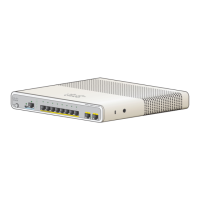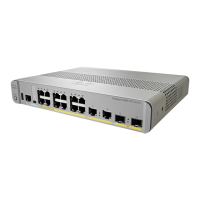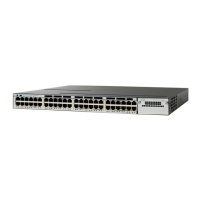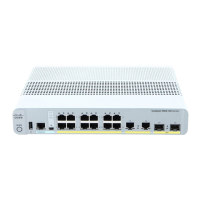2-236
Catalyst 3550 Multilayer Switch Command Reference
OL-8566-02
Chapter 2 Catalyst 3550 Switch Cisco IOS Commands
match (class-map configuration)
To define packet classification on a per-port per-VLAN basis, follow these guidelines:
• You must use the match-all keyword with the class-map global configuration command to imply
the Logical-AND of all matching statements under this class map.
• Per-port per-VLAN classification is a per-port feature and does not work on redundant links. It is
supported only on an ingress port configured as a trunk or as a static-access port.
• The class map must have two match commands in this order: one match vlan vlan-list class-map
configuration command and one match class-map class-map-name class-map configuration
command. The class map specified in the match class-map class-map-name command must be
predefined and cannot contain the match vlan vlan-list and the match class-map class-map-name
commands.
• You cannot configure both port-based classification and VLAN-based classification at the same
time. When you enter the match vlan vlan-list command, the class map becomes per-port
per-VLAN based. If you configure a policy map that contains both port-based and VLAN-based
class maps, the switch rejects the policy map when you attach it to an interface.
• Within a policy map, when you use the match vlan vlan-list command, all other class maps must
use the match vlan vlan-list command.
• If you want to modify the VLAN list, first remove the previous configuration in the class map by
using the no match vlan vlan-list command and the no match class-map class-map-name
command. Then reconfigure the class map, and specify the new VLAN list. If the policy map is
attached to an interface and you modify the class map by using any other method, the policy map
detaches from the interface.
For the match ip dscp dscp-list or the match ip precedence ip-precedence-list command, you can enter
a mnemonic name for a commonly-used value. For example, you can enter the match ip dscp af11
command, which is the same as entering the match ip dscp 10 command. You can enter the match ip
precedence critical command, which is the same as entering the match ip precedence 5 command. For
a list of supported mnemonics, enter the match ip dscp ? or the match ip precedence ? command to
see the command-line help strings.
You cannot attach policy maps that contain these elements to an egress interface by using the
service-policy interface configuration command:
• set or trust policy-map class configuration commands. Instead, you can use the police policy-map
class configuration command to mark down (reduce) the DSCP value at the egress interface.
• Access control list (ACL) classification.
• Per-port per-VLAN classification.
The only match criterion in a policy map that can be attached to an egress interface is the match ip dscp
dscp-list class-map configuration command.
Examples This example shows how to create a class map called class2, which matches all the incoming traffic with
DSCP values of 10, 11, and 12:
Switch(config)# class-map class2
Switch(config-cmap)# match ip dscp 10 11 12
Switch(config-cmap)# exit
This example shows how to create a class map called class3, which matches all the incoming traffic with
IP-precedence values of 5, 6, and 7:
Switch(config)# class-map class3
Switch(config-cmap)# match ip precedence 5 6 7
Switch(config-cmap)# exit

